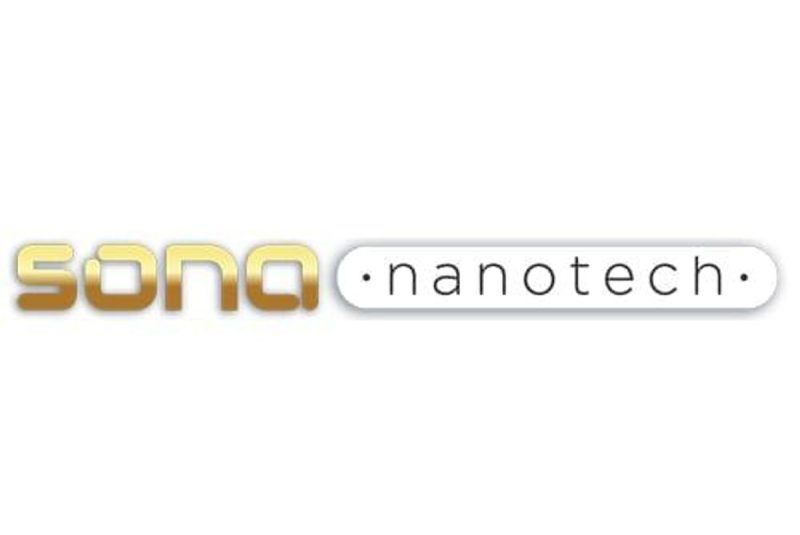Sona Nanotech Inc. (CSE: SONA) (OTCQB: SNANF) (the ‘Company’ or ‘Sona’) announces further results from the triple negative breast cancer murine model portion of its current research study at Dalhousie University (the ‘Study’) which confirms that the previously reported tumor volume reduction was due to activation of a tumor specific systemic immune response. These data relate to the follow-up biomarker analysis performed on the previously reported cohort of animals that showed a statistically significant synergistic effect in the shrinking of both treated and untreated tumors in animals bearing multiple tumors after treatment with the combination of Sona’s targeted hyperthermia therapy (‘THT’) and interleukin-2 (‘IL-2’), an immunotherapy agent widely used to treat human cancer patients.
The fluorescence-activated cell sorting (‘FACS’) analysis of the tumor infiltrating cells looking at two panels of 12 biomarkers demonstrated a statistically significant cytotoxic T-cell infiltrate in both treated tumors and the untreated (contralateral) tumors, confirming a systemic immune response, consistent with an abscopal effect, in the treated mice treated with the combined THT and IL-2 therapy that is not seen in the other groups. Also notable is the fact that cytotoxic T-cells in treated tumors express significantly more immune checkpoint indicating potential for additional benefits.
Study Principal Investigator and Sona Advisory Board member, Dr. Carman Giacomantonio, comments, ‘While our earlier data clearly showed that the Sona therapy achieved a synergistic effect in shrinking tumors when combined with IL-2, this follow-up analysis confirms our hypothesis that the effects were due to activation of a systemic immune response, and not just a local effect, with the data showing a statistically significant, cytotoxic T-cell infiltration in remote, untreated tumors.This type of abscopal effect is extremely rare and highly sought after in cancer treatment protocols. It is also notable that treated tumors also demonstrated significantly more memory T-cells, which would be consistent with an enduring systemic immune response. With our hypothesis proven in these triple negative breast cancer mouse experiments, the lab team is looking forward to assessing whether similar promising results can be shown in melanoma and colorectal cancer murine models.’
Sona CEO, David Regan, commented, ‘We are very pleased to see the study data confirm that Sona’s THT, when combined with a standard immunotherapy agent to treat a single tumor, creates a response consistent with an abscopal effect by modulating the entire immune system, beneficially impacting distant, untreated tumors in this triple negative breast cancer mouse model. While we anticipate the coming results for melanoma and colorectal cancer in mice, with the complete breast cancer efficacy data now in hand, Sona will move quickly to begin the safety, biocompatibility and further efficacy studies indicated by regulators to be required in consideration for approval of a first-in-human study of the combined therapy.’
The Study consisted of 26 mice bearing multiple triple negative breast cancer tumors, including a control group of six, seven given IL-2 only, and seven given THT only, as well as the cohort of six mice that were administered the combination of the generation of hyperthermia followed by intratumoral injections with IL-2. The Study’s next step is to assess the therapy’s ability to generate similar results in melanoma and colorectal cancer mouse models and determine the extent to which it eliminates untreated distant tumors for these cancers. Following the melanoma and colorectal experiments in the Study, regulatory permission to conduct human trials will require certain satisfactory pre-clinical safety and biocompatibility studies, amongst other potential work. The Company has received guidance on its pre-clinical study plan from both a pre-submission meeting with the Food and Drug Administration and its EXCITE International (see press release date September 5, 2023) panel of senior physicians and payor organization representatives in the United States.
The results discussed in this release are preliminary and have not been subject to peer review. Upon completion, the Company expects that the full Study will be submitted for peer review and scientific journal publication.
Contact:
David Regan, CEO
+1-902-536-1932
david@sonanano.com
About Sona Nanotech Inc.
Sona Nanotech, a nanotechnology life sciences company, is developing Targeted Hyperthermia, a photothermal cancer therapy, which uses therapeutic heat to treat solid cancer tumors. The heat is delivered to tumors by infrared light that is absorbed by Sona’s gold nanorods in the tumor and re-emitted as heat. Therapeutic heat (41-48°C) stimulates the immune system, shrinks tumors, inactivates cancer stem cells, and increases tumor perfusion – thus enabling drugs to reach all tumor compartments more effectively. The size, shape, and surface chemistry of the nanorods target the leaky vasculature of solid tumors, and the selective thermal sensitivity of tumor tissue enables the therapy to deliver clean margins. Targeted Hyperthermia promises to be safe, effective, minimally invasive, competitive in cost, and a valuable adjunct to drug therapy and other cancer treatments.
Sona has developed multiple proprietary methods for the manufacture of gold nanoparticles which it uses for the development of both cancer therapies and diagnostic testing platforms. Sona Nanotech’s gold nanorod particles are cetyltrimethylammonium (‘CTAB’) free, eliminating the toxicity risks associated with the use of other gold nanorod technologies in medical applications. It is expected that Sona’s gold nanotechnologies may be adapted for use in applications, as a safe and effective delivery system for multiple medical treatments, subject to the approval of various regulatory boards, including Health Canada and the FDA.
CAUTIONARY STATEMENT REGARDING FORWARD-LOOKING INFORMATION: This press release includes certain ‘forward-looking statements’ under applicable Canadian securities legislation, including statements regarding the anticipated applications of Targeted Hyperthermia Therapy, the Dalhousie study, future publication of study results, Sona’s preclinical study plans, the potential impact of the planned studies and its product development plans. Forward-looking statements are necessarily based upon a number of assumptions or estimates that, while considered reasonable, are subject to known and unknown risks, uncertainties, and other factors which may cause the actual results and future events to differ materially from those expressed or implied by such forward-looking statements, including the risk that Sona may not be able to successfully obtain sufficient clinical and other data to submit regulatory submissions, raise sufficient additional capital, secure patents or develop the envisioned therapy, and the risk that THT may not prove to have the benefits currently anticipated. There can be no assurance that such statements will prove to be accurate, as actual results and future events could differ materially from those anticipated in such statements. Accordingly, readers should not place undue reliance on forward-looking statements. Sona disclaims any intention or obligation to update or revise any forward-looking statements, whether as a result of new information, future events or otherwise, except as required by law.
Not for distribution to United States newswire services or for dissemination in the United States
To view the source version of this press release, please visit https://www.newsfilecorp.com/release/207231
News Provided by Newsfile via QuoteMedia





























